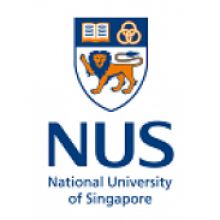Singapore has long been regarded as a producer of students who perform well on tests but lack the creative outlook necessary to make ground-breaking innovations and compete in the global marketplace.
That stereotype felt overblown, Singapore’s education minister Ye Kung Ong told Times Higher Education’s World Academic Summit at the National University of Singapore. But to the degree that the stereotype contained some unpleasant truths, Mr Ong said, Singapore was now well into the process of fixing it, even if it might be a few years before the outside world recognises what has been going on.
The effort goes back several years, with initiatives to give schoolteachers more flexibility in their curriculum. Now, in the realm of higher education, it means making university learning more experiential and promoting overseas exchanges and entrepreneurial skills, Mr Ong said.
The goal is “not just flipped classrooms”, Mr Ong told the annual gathering, referring to the increasingly popular practice of emphasising classroom discussions over lectures, “but flipped campuses, and flipped faculty”.
The prowess of Singapore’s educational system has long been renowned. The island nation’s 15-year-old school students regularly populate the top ranks of the international tests run by the Organisation for Economic Cooperation and Development, called the Programme for International Student Assessment, or Pisa.
But Singapore’s leaders have increasingly been acknowledging that the cultural pressure put on the country’s children to spend their hours studying has left them too one-dimensional. Among the evidence cited are low patent counts and a US Chamber of Commerce survey that ranked the country’s workforce high on technical skills but poorly on measures of creativity and innovation.
Mr Ong said that such impressions might be unfair because students and workers need to understand a subject well in order to do much creatively with it. A new Pisa test aimed at assessing creativity began in 2015, and Singapore came out at the top, Mr Ong said.
The new emphasis on educational risk-taking might not yet be evident to people outside Singapore, but it will become much clearer to all within a decade or so, Mr Ong said. “Change is under way,” he promised the conference.
And compared with other countries, Singapore comes to the problem with some strong advantages. Asma Ismail, vice-chancellor of Universiti Sains Malaysia, told the conference that she could only look enviously at her neighbouring country, given Malaysia’s struggles to finance basic levels of university research.
Nevertheless, she holds out hope that the new Malaysian government appreciates the need to prioritise education spending. “Fortunately for Malaysia,” she said, “the political willpower is still there.”
paul.basken@timeshighereducation.com
POSTSCRIPT:
Print headline: Driving out stereotypes: Singapore focuses on developing students’ creativity
Register to continue
Why register?
- Registration is free and only takes a moment
- Once registered, you can read 3 articles a month
- Sign up for our newsletter
Subscribe
Or subscribe for unlimited access to:
- Unlimited access to news, views, insights & reviews
- Digital editions
- Digital access to THE’s university and college rankings analysis
Already registered or a current subscriber? Login










